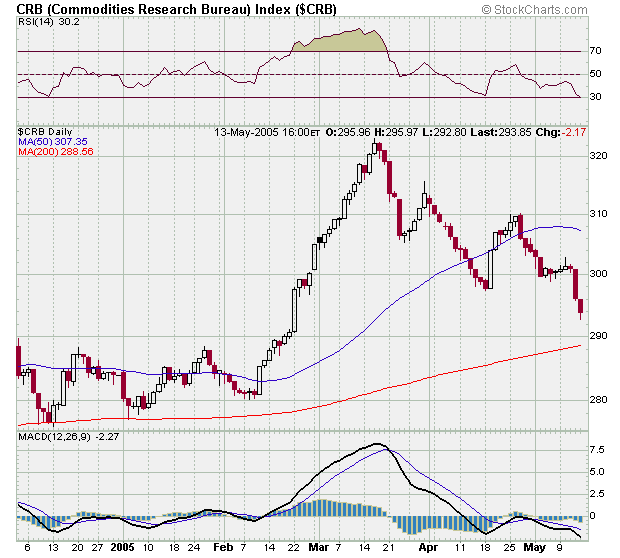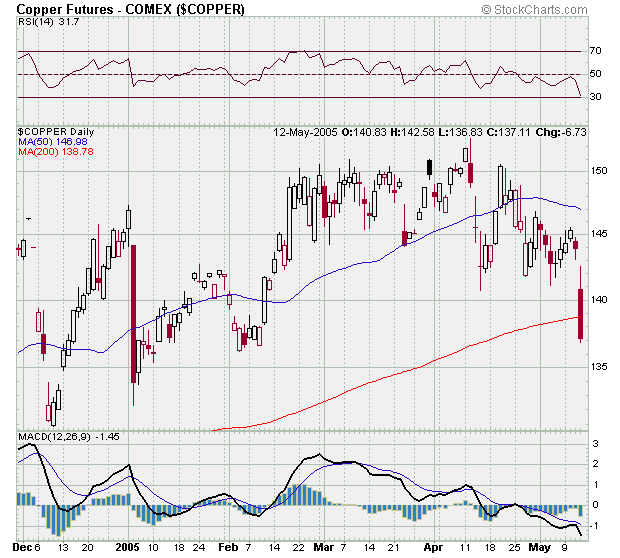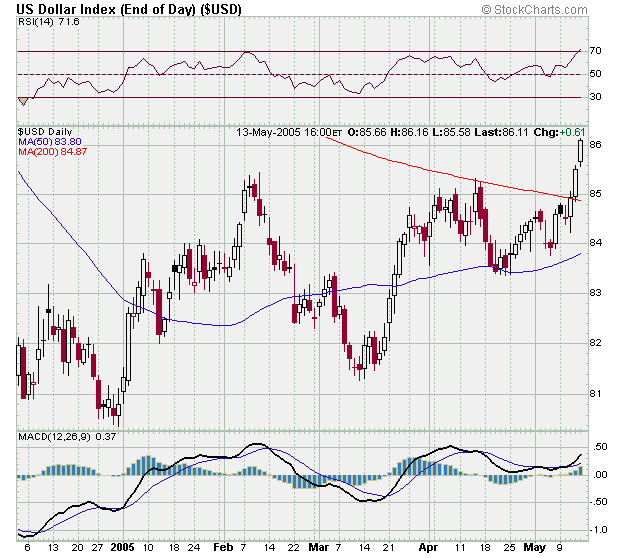|
SATURDAY EDITION December 27th, 2025 |
|
Home :: Archives :: Contact |
 |
DeflationRichard Russell snippet
May 13, 2005 -- Question -- If deflation is almost impossible, since the Fed can neutralize any deflation simply by increasing the money base, why is the Fed so worried about deflation -- or, as the Fed puts it, "insufficient inflation"? Answer -- If there's a credit collapse, it seems to me that the situation could change very quickly and soon get out of hand -- in which case we'd have deflation. Look, we don't have to get into the theory of why deflation can or cannot occur. I go by what I see in the markets and in chart action. The fact is that the stock market has been deflating all year. Now the stock market has been joined by oil, commodity prices, copper, steel, aluminum, gold, Goldman Sachs Natural Resources Index, materials in general. I don't know what you want to call it, but I call it some kind or variety of deflation. You want proof? OK, check the daily chart of the CRB Commodity Index below. I'd call this a breakdown, wouldn't you? It sure isn't an inflation in commodities.
 How about copper, the metal that is used so universally that it's been given the name of "Doctor"? Yesterday we saw a huge downside gap, taking Dr. Copper to it lowest level since early February.
 In the meantime, the hottest item around is the US dollar. Why is the dollar at a high for the year? Good question, and I haven't read about or seen the definitive answer yet. Of course, the market answer is "more buyers than sellers," but how does that help us? I've been saying all along that when everybody is invested on one side of the equation -- watch out. And it's true, the biggest "given" around a month or so ago was that "shorting the dollar was the guaranteed path to profits." And it's true, even Buffett and Gates announced to the world that the dollar had nowhere to go but down. In this business, when everybody agrees on one thesis, it's almost a certain that this "thesis" has been fully discounted by the market. Thus everybody followed what was "agreed upon" and took a position against the dollar. So yes, the dollar's strength could simply be a matter of driving the dollar shorts to the wall. The other thesis that comes to mind is something I've talked about before. All debt must be paid off, some debt paid off in a hurry and some paid off over time. But you pay off debt with dollars, and if there's too much debt outstanding and there's pressure to pay off that debt -- that's going to create a demand for dollars. The greater the debt, the greater the potential demand for dollars to pay off that debt. Which is why I said that massive debt amounts to a massive synthetic short position against the dollar. Now I'm wondering if what we're seeing is a sudden demand for dollars. I'm wondering if what we're seeing is a short squeeze against the dollar brought on by hints of deflation. Remember, in deflation dollars become scarcer -- and in deflation debt becomes a dirty word. If, in fact, deflation is in the wind, there's going to be a mad rush to pay off debt, and that's going to generate an urgent demand for dollars. Could that be what we're seeing now, as the dollar rises to a high for the year? It's sure got me wondering. So do we have the two worst combinations -- a deflationary squeeze on debt and a huge short position against the dollar? Whew.
 Dow Theory Letters ©Copyright 2005 Dow Theory Letters, Inc.
Richard Russell began publishing Dow Theory Letters in 1958, and he has been writing the Letters ever since (never once having skipped a Letter). Dow Theory Letters is the oldest service continuously written by one person in the business.
He offers a TRIAL (two consecutive up-to-date issues) for $1.00(same price that was originally charged in 1958). Trials, please one time only. Mail your $1.00 check to: Dow Theory Letters, PO Box 1759, La Jolla, CA 92038 (annual cost of a subscription is $250, tax deductible if ordered through your business).
|
| Home :: Archives :: Contact |
SATURDAY EDITION December 27th, 2025 © 2025 321energy.com |
|